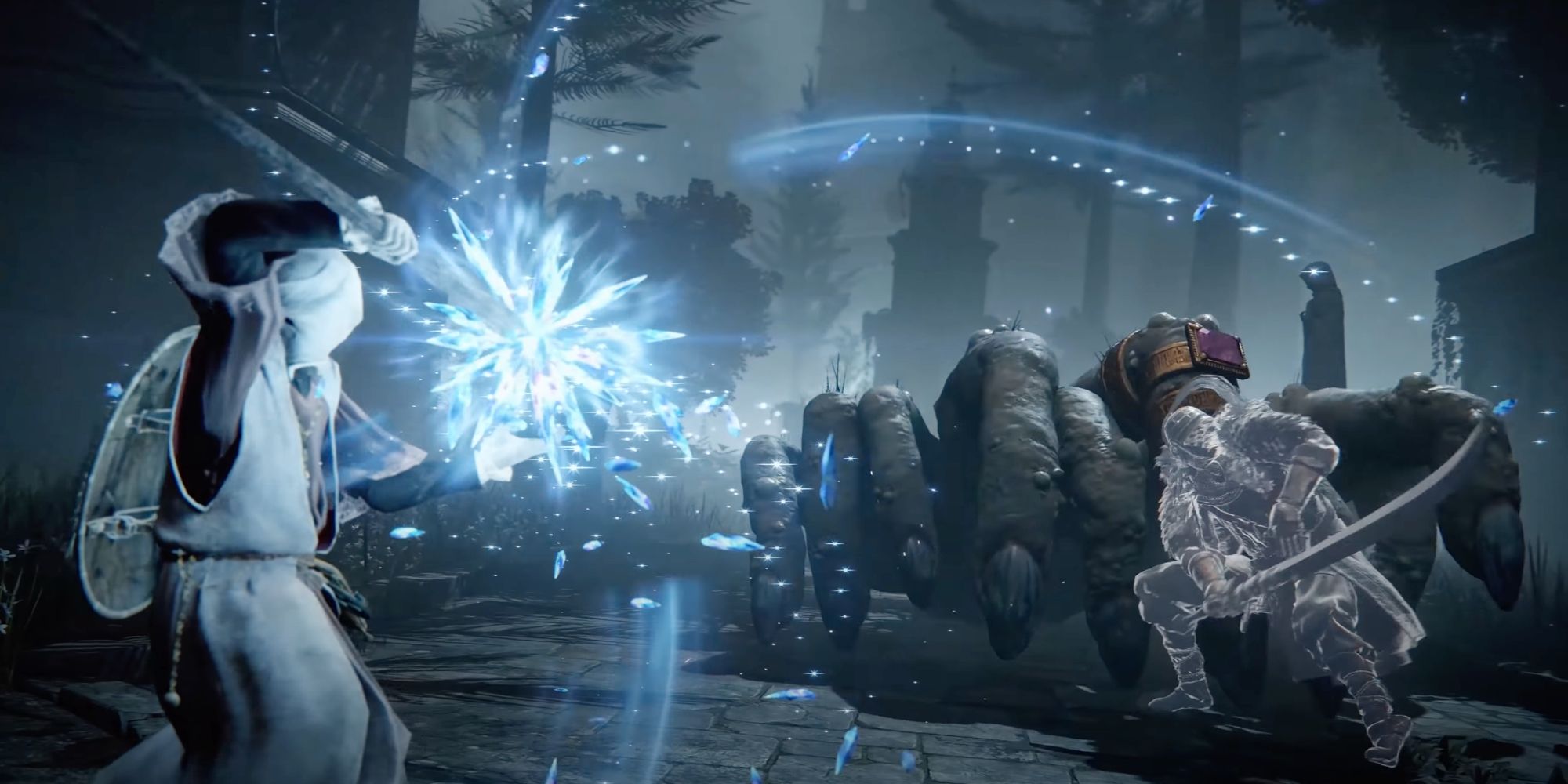Prior to the release of Elden Ring, there was a concern that a new mechanic allowing players to summon NPC spirits for help would undermine FromSoftware’s signature difficult game design, but they’ve turned out to be awesome. The Spirit Ashes which allow for summoning are acquired in a variety of ways, and are a very helpful tool in the player’s arsenal. Despite their usefulness, most aren’t especially powerful in terms of damage, but end up being incredibly helpful because of how they interact with a game mechanic called Poise.
Elden Ring‘s spirit summoning and co-op work similarly, but are mutually exclusive. Using Spirit Ashes isn’t allowed while another Tarnished or two are in the game. Spirit Ashes are usually phantom versions of foes players have likely encountered (but not always), and can be rewards for beating bosses, looting chests and corpses, or can sometimes be purchased from merchants. Only one Spirit Ash can be used at a time (though many spawn multiple spirits) and they cost FP to use. They are also available for use only in certain areas, delineated by a specific icon appearing on the HUD – a bright blue tombstone on the left-hand edge of the screen.
Elden Ring often throws groups of enemies at the player, and having a handful of spiritual companions can be even the odds. It even lightens the pressure when enemies are distracted by the spirits, and finding more of Elden Ring‘s Spirit Ashes will give players more variety in how they approach encounters. Spirit Ashes can be upgraded with the NPC Roderika in Roundtable Hold (after she’s been spoken with at Stormhill Shack), but most don’t ever really attain any significant amount of combat prowess, but they can still help players get an edge, especially in long boss fights.
How Elden Ring’s Spirit Ashes Affect Poise

Players may notice that the Status menu lists Poise next to a numerical value. This number comes from the armor worn, and affects how easily the player character can be knocked down by successive enemy attacks. Enemies also have a hidden Poise stat, and breaking their Poise will open them up for a critical hit. Humanoid enemies usually fall to their knees for a few seconds, letting players perform a critical hit from either the front or the back. Poise was a major component of how Sekiro evolved combat away from Dark Souls, making it a more visible part of the parry-heavy combat.
Damage to an enemy’s Poise in Elden Ring is built up with repeated strikes (just like how the player’s Poise is damaged) and it gradually decreases while they’re not taking damage. Most regular mobs will die before their Poise is broken, except for when they’re hit with attacks that do extra damage to Poise, like strong jump attacks. Spirit Ashes help take advantage of the Poise mechanic by lessening the time enemies aren’t being damaged. Even if the base damage from a helper is slight, it keeps the enemy’s hidden Poise meter from draining.
This can be what turns a fight in the player’s favor, especially in long, difficult Elden Ring boss fights like Godrick the Grafted, the monstrous Lord of Stormveil Castle. Bosses often have long attack combos that need to be avoided while players wait for an opening to attack. Without a Spirit Ash summoned, this is where the boss’ Poise damage can reset, making it difficult to stagger them. Having a Spirit Ash that can absorb a lot of damage (the Jellyfish Ashes are a good early game example) will both distract the boss and keep its Poise damage up, giving players more opportunities to take big chunks out of the large health bars with critical hits. Elden Ring‘s Spirit Ashes aren’t necessarily always good at taking out enemies, but they do give the player more opportunities to deal extra damage, making them very useful, especially in protracted boss fights.




